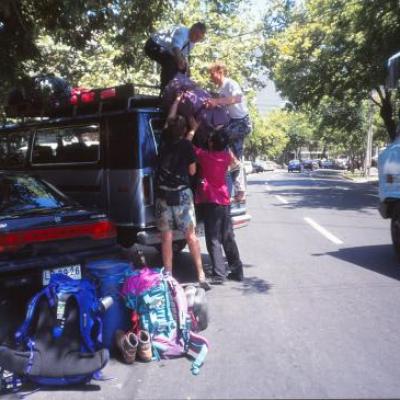Caring for Nature: Grizzly Bear
Grizzly Bear:
Height: 3- 3 ½ feet at shoulders.
Length: 6-7 feet.
Weight: Adult males 300 - 850 lbs; females 200 - 450 lbs.
Top speed 35 mph.
Lifespan 20 - 25 years.
Diet
Grizzly bears are omnivorous and will eat both vegetation and animals. Grasses, sedges, roots, berries, insects, fish, carrion and small and large mammals.
.
Population
Historically, there were around 50,000 grizzly bears in North America. Today, there are 1,000 - 1,200 grizzly bears remaining in five separate populations in the lower 48 states. In Alaska, there are thought to be over 30,000 grizzly bears.
Range
Grizzly bears are found in a variety of habitats, from dense forests, to subalpine meadows and arctic tundra. In North America, grizzly bears are found in western Canada, Alaska, Wyoming, Montana, Idaho, and Washington. Historically, they could be found from Alaska to Mexico, California to Ohio. The grizzly bear was once common on the Great Plains. However, human encroachment has forced the remaining brown bear populations to move to rugged mountains and remote forests that are undisturbed by humans.
Behavior
Bears live solitary lives except during breeding, cub rearing, and in areas with a super-abundant food supply such as salmon streams. Grizzly bears hibernate during the winter for 5-8 months, and usually dig their dens on north-facing slopes to ensure good snow cover.
Grizzly bears need to eat a lot in the summer and fall in order to build up sufficient fat reserves for surviving the denning period. This is particularly true for pregnant females who give birth to one pound cubs and then nurse them to about 20 pounds before emerging from the den in April -May.
.
Threats
Once common throughout the mountains and the Great Plains the grizzly bear (or brown bear) has been reduced to 2% of their historic range in the lower 48 states. A total of only 1,200-1,400 individuals still survive in five populations. For thirty years, Defenders has been actively involved in trying to make sure that this remarkable animal is recovered throughout its range.
The biggest threat to grizzly bear survival in the lower 48 is human-caused mortality. Bears come into conflict with humans when they are attracted by garbage, pet foods and bird food. This can often lead to the lethal removal of the bear. In addition, some brown bears are accidentally killed by hunters who mistake them for black bears, which are legal to hunt. And lastly, illegal killing (poaching) of bears remains another reason for their decline. Another threat is habitat degradation due to development, logging, road-building and energy and mineral exploration.
.
FAIR USE NOTICE: These pages/video may contain copyrighted (© ) material the use of which has not always been specifically authorized by the copyright owner. Such material is made available to advance understanding of ecological, political, human rights, economic, democracy, scientific, moral, ethical, and social justice issues, etc. It is believed that this constitutes a 'fair use' of any such copyrighted material as provided for in section 107 of the US Copyright Law. In accordance with Title 17 U.S.C. Section 107, this material is distributed without profit to those who have expressed a prior general interest in receiving similar information for research and educational purposes.


























